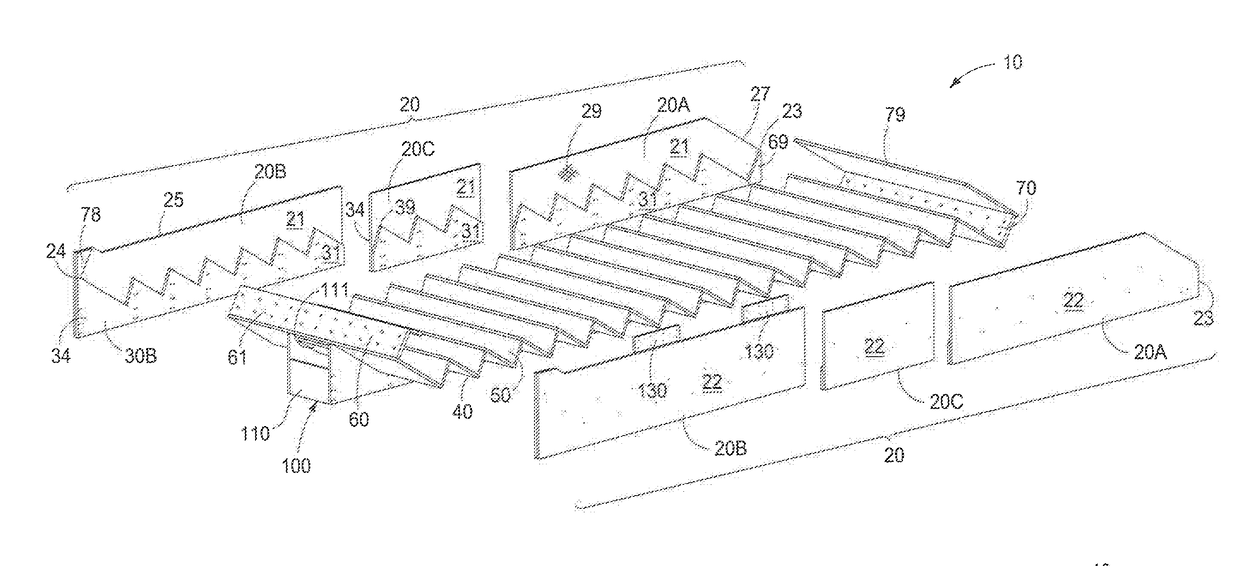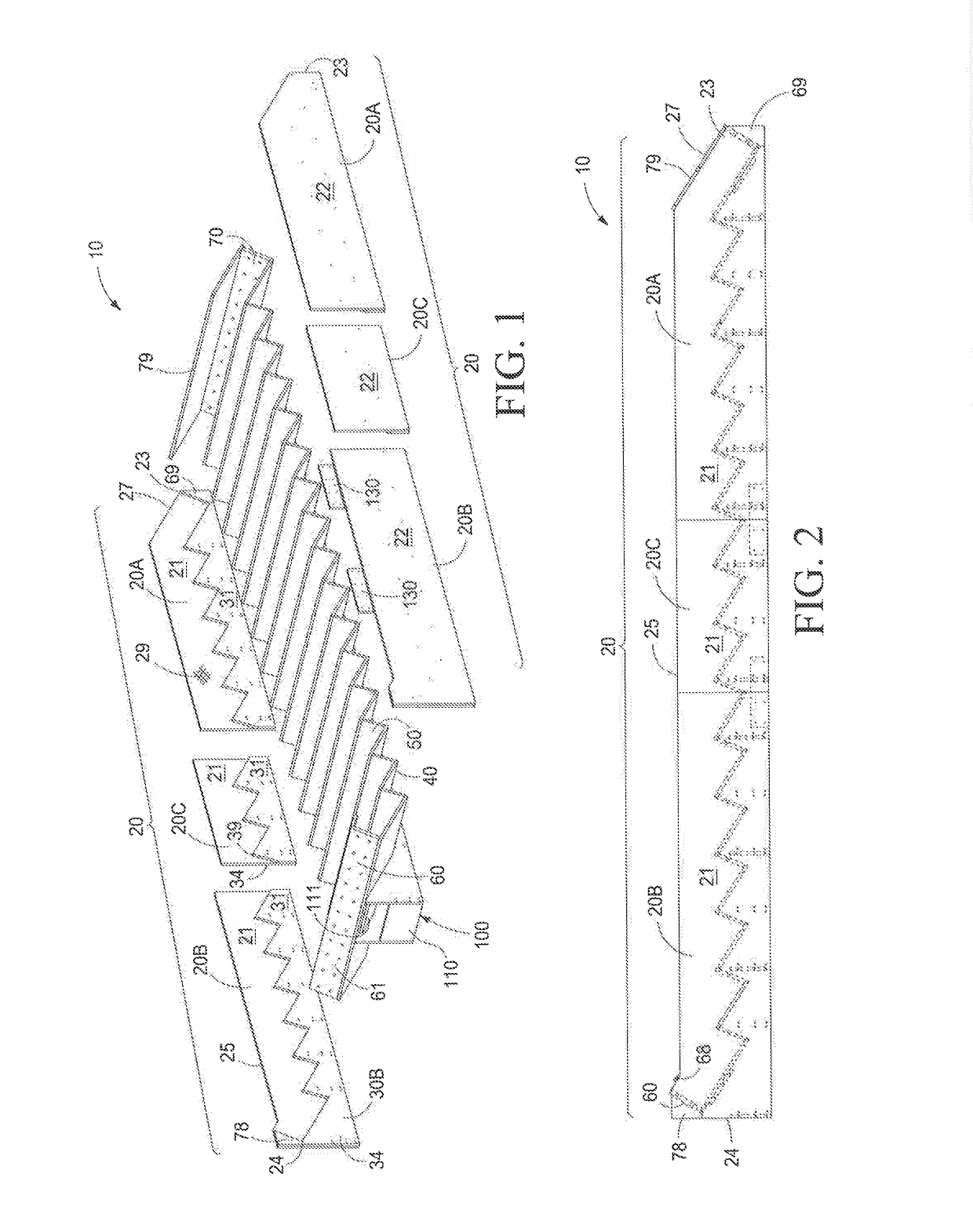Method and apparatus for production of precision precast concrete flights of stairs
a technology of precast concrete and production method, which is applied in the direction of manufacturing tools, ceramic shaping apparatus, moulds, etc., can solve the problems of increasing the risk of premises liability, the stringer of stairs being non-compliant with building codes, and the difficulty of using preformed standardized stringers to extend, etc., to achieve the effect of adding structural rigidity and structural rigidity
- Summary
- Abstract
- Description
- Claims
- Application Information
AI Technical Summary
Benefits of technology
Problems solved by technology
Method used
Image
Examples
Embodiment Construction
[0110]My method and apparatus for production of precision precast concrete flights of stairs generally provides precision cut side boards 20, tread supports 30, treads 40, risers 50, an upper landing assembly 80 and a lower landing assembly 90.
[0111]As can be seen in FIG. 1, each precision cut form (hereinafter designated generally by the numeral 10) has two spaced apart side boards 20 each carrying tread supports 30. The sideboards 20 and tread supports 30 are identical mirror images of one another. Because of this similarity only one side board 20 and one tread support 30 will be described in detail herein.
[0112]In use, the side boards 20 are parallel and spaced apart from one another so that a plurality of tread 40 and riser 50 combinations extend transversely therebetween. The length of any produced concrete stringer of stairs (not shown) may be adjusted by adding an intermediate portion 20C of a side board 20 and a tread support 30C between a first lower portion 20A and a secon...
PUM
| Property | Measurement | Unit |
|---|---|---|
| Angle | aaaaa | aaaaa |
| Flow rate | aaaaa | aaaaa |
| Stiffness | aaaaa | aaaaa |
Abstract
Description
Claims
Application Information
 Login to View More
Login to View More - R&D
- Intellectual Property
- Life Sciences
- Materials
- Tech Scout
- Unparalleled Data Quality
- Higher Quality Content
- 60% Fewer Hallucinations
Browse by: Latest US Patents, China's latest patents, Technical Efficacy Thesaurus, Application Domain, Technology Topic, Popular Technical Reports.
© 2025 PatSnap. All rights reserved.Legal|Privacy policy|Modern Slavery Act Transparency Statement|Sitemap|About US| Contact US: help@patsnap.com



